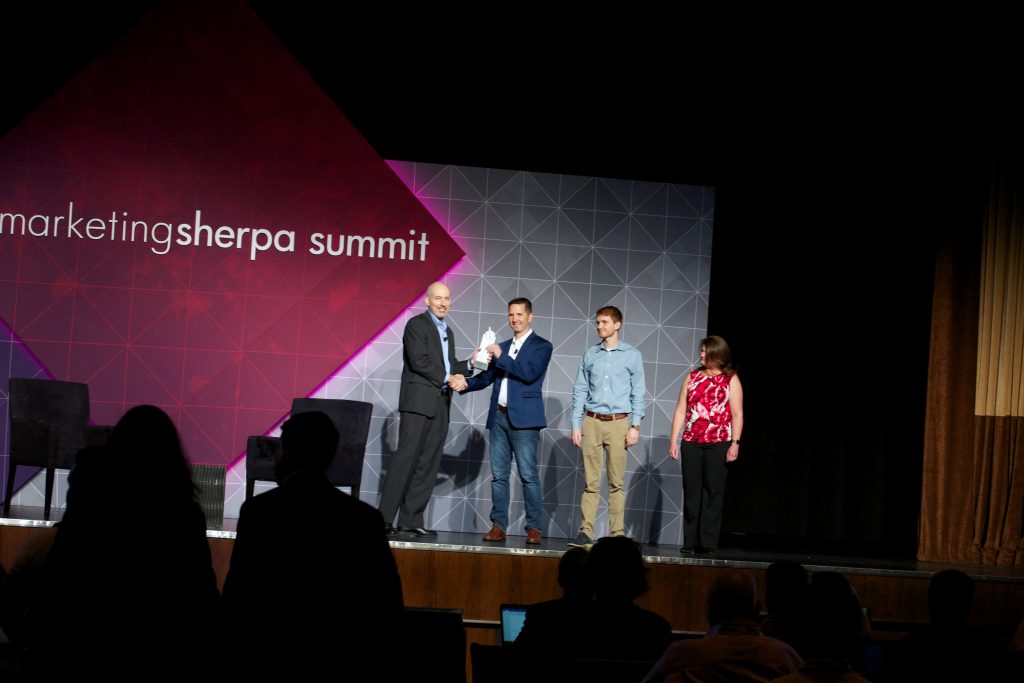Live from MarketingSherpa Summit 2017: Making your customer the hero of your campaign
Vegas is in the middle of the Mojave Desert of Nevada, and yet you can move from Venice, to New York and over to Paris in 10 minutes.
MarketingSherpa Summit week is the one time every year that we get to bring the MarketingSherpa community together in the middle of Las Vegas to study (and toast to, at the Summit Party) customer-first marketing.
During the day, we work out of the beautiful Aria hotel, and at night, walk out onto the strip past famous structures like the Bellagio, Caesar’s Palace and the Paris Hotel, and it’s easy to see that there is no place else like it. In this morning’s Intro session, Daniel Burstein, Summit Co-host and Director of Editorial Content, MarketingSherpa, even spoke about the customer-centric thought process behind having penguins in the Flamingo hotel, thriving in the most unlikely of environments.
These structures, sights and scenes make Vegas one of the most popular and attractive destinations in the country. But how many of us think about the men and women who actually make Vegas what it is, by building (and re-building) the glorious hotels that shape the Strip.
Most don’t notice or consider the construction industry at all unless it’s somehow causing an inconvenience or delay in our day. No one glides over bridges and overpasses and thinks about how advanced new infrastructure is.
To change that perspective, construction software company HCSS decided to take on the challenge of getting the men and women that work in construction the recognition they deserve.
Dan Briscoe, Vice President of Marketing, HCSS, spoke today in his Best-in-Show Awards session on how, as marketers, they had to “get over” themselves in order to truly be customer-first.
Elevating their customers would translate into elevating the industry, and as a result, the company.
Dan and his team developed the “I Build America” campaign, which focused on improving the image of the construction industry, infusing the people who work in it with pride and attracting a new generation of talent.
How did they do it?









